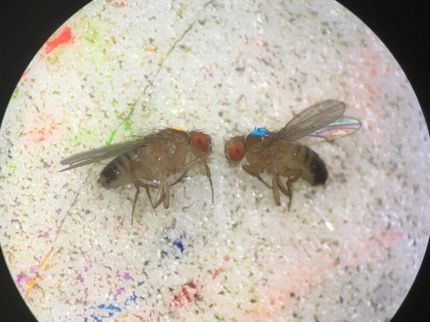Petroleum-eating mushrooms
B. Franz Lang and Mohamed Hijri break new ground in environmental genomics
Advertisement
Take a Petri dish containing crude petroleum and it will release a strong odor distinctive of the toxins that make up the fossil fuel. Sprinkle mushroom spores over the Petri dish and let it sit for two weeks in an incubator, and surprise, the petroleum and its smell will disappear. “The mushrooms consumed the petroleum!” says Mohamed Hijri, a professor of biological sciences and researcher at the University of Montreal’s Institut de recherche en biologie végétale (IRBV).
Hijri co-directs a project with B. Franz Lang promoting nature as the number one ally in the fight against contamination. Lang holds the Canada Research Chair on Comparative and Evolutionary Genomics and is a professor at the university’s Department of Biochemistry. By using bacteria to stimulate the exceptional growth capacity of certain plants and microscopic mushrooms, Hijri and Lang believe they are able to create in situ decontamination units able to successfully attack the most contaminated sites on the planet.
The recipe is simple. In the spring, we plant willow cuttings at 25-centimeter intervals so the roots dive into the ground and soak up the degrading contaminants in the timber along with the bacteria. At the end of the season, we burn the stems and leaves and we are left with a handful of ashes imprisoning all of the heavy metals that accumulated in the plant cells. Highly contaminated soil will be cleansed after just a few cycles. “In addition, it’s beautiful,” says Hijri pointing to a picture of dense vegetation covering the ground of an old refinery after just three weeks.
Thanks to the collaboration of an oil company from the Montreal area, the researchers had access to a microbiological paradise: an area where practically nothing can grow and where no one ventures without protective gear worthy of a space traveler. This is where Hijri collected microorganisms specialized in the ingestion of fossil fuels. “If we leave nature to itself, even the most contaminated sites will find some sort of balance thanks to the colonization by bacteria and mushrooms. But by isolating the most efficient species in this biological battle, we can gain a lot of time.”
Natural and artificial selection
This is the visible part of the project, which could lead to a breakthrough in soil decontamination. The project is called Improving Bioremediation of Polluted Soils Through Environmental Genomics and it requires time-consuming sampling and fieldwork as well as DNA sequencing of the species in question. The project involves 16 researchers from the University of Montreal and McGill University, many of which are affiliated with the IRBV. The team also includes four researchers, lawyers and political scientists, specializing in the ethical, environmental, economic, legal and social aspects of genomics.
The principle is based on a well-known process in the sector called phytoremediation that consists in using plant matter for decontamination. “However, in contaminated soils, it isn’t the plant doing most of the work,” says Lang. “It’s the microorganisms i.e. the mushrooms and bacteria accompanying the root. There are thousands of species of microorganisms and our job is to find the best plant-mushroom-bacteria combinations.”
Botanist Michel Labrecque is overseeing the plant portion of the project. The willow seems to be one of the leading species at this point given its rapid growth and premature foliation. In addition, its stem grows even stronger once it has been cut. Therefore, there is no need to plant new trees every year. However, the best willow species still needs to be determined.


















































